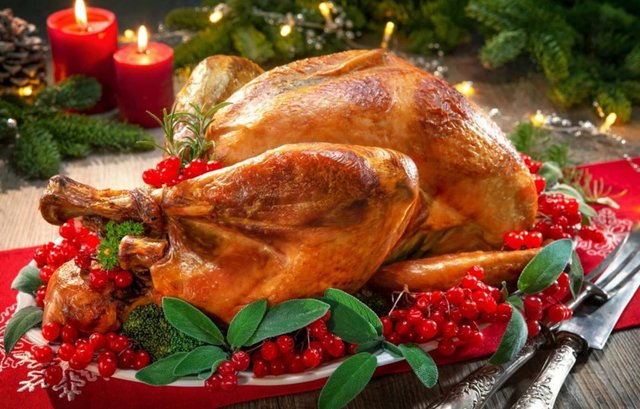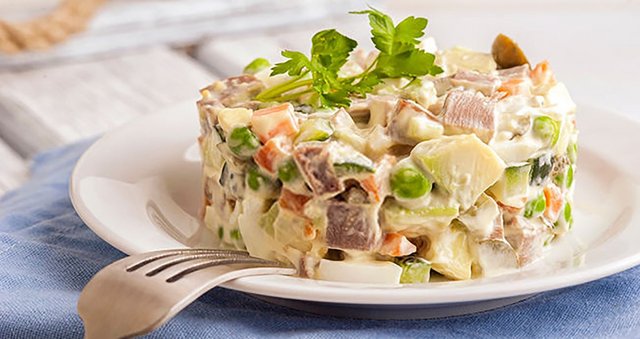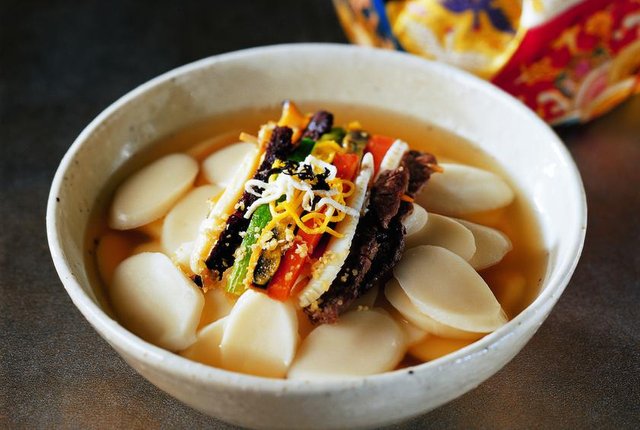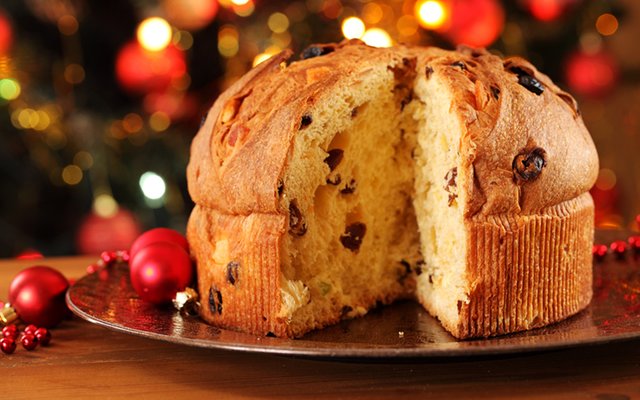Tteokguk is a traditional Korean New Year's soup.

THE PLATE
5 Festive Food Traditions From Around the World
Embark on a winter culinary tour and get to know some holiday comfort foods you've probably never heard of.
BYKORENA DI ROMA
PUBLISHED DECEMBER 21, 2016
• 8 MIN READ
The holiday season is full of lists: children's letters to Santa, the year's best- and worst-dressed celebrities, the top ten holiday destinations that are warmer than yours, your own overly optimistic to-do list.
Naturally, I wanted to add my own to the mix. My first thought, a list of traditional holiday foods from around the world, basically writes its own headline and so makes a great candidate. But how to narrow it down? Call on friends and family.
The resulting list is an unusual collection, a virtual potluck of cultural comfort food. And while you may be familiar with one or more of these dishes, there’s sure to be at least one surprise you'll want to know more about—and even make yourself.
Mexico, Pavo Relleno de Navidad

“Anything and everything,” my friend in Mexico City responds when I ask what she and her family eat during the holidays. This turns out to be a fairly accurate description of the list that follows. Roast lamb, beef Wellington, prawns, traditional Christmas romeritos—a dish of wild native plants typically cooked in mole with dried shrimp and potatoes. And, of course, stuffed turkey, or pavo relleno de Navidad.
The turkey is a New World bird with—for complicated reasons—an Old World name. In Spanish, it’s known alternately as pavo, derived from the Latin word for “peacock” (again, it’s complicated), and guajolote, from the Aztec word huexolotl. In fact, the Aztecs were feasting on the bird long before it became a modern holiday staple. In Mexico today, the Christmas turkey might be stuffed with ground pork, raisins, apples, almonds, and jalapeños.
Moldova, Olivie Salad

In the tiny country of Moldova, occupying a landlocked pocket between Ukraine and Romania, the traditional New Year’s feast features dishes found throughout the region—the beet-bright “herring under a fur coat”; the molded, gelatinous holodets, made with pig’s feet and generations of love; stuffed cabbage rolls with a snowy topping of sour cream. But for my Moldovan friend, the dish that immediately comes to mind is the olivie salad (or, variously, olivier or olivye). “That’s a must,” she says. Also known simply as Russian salad, it consists of a medley of root vegetables, pickled cucumbers, boiled egg, and a meat perhaps best described as bologna, all diced to the size of a pea, the salad’s smallest ingredient and the round outlier in a mayonnaise-coated sea of cubes.
The salad requires a lot of chopping—three hours’ worth, according to my friend, although I’m tempted to put this down to a self-imposed standard of precision. And while I’ve tried variations of this salad during my travels, I’m convinced I won’t have had the real thing until I’ve tried hers. Just a little hint, in case she’s reading.
Suiza, Fondue Chinoise

Possibly the Swissest of dishes—particularly for the non-Swiss—fondue is often thought of as the bubbly blend of hard Alpine cheeses, wine, garlic, and cherry brandy that's a good candidate for revival at trendy American dinner parties. Evoking wood-beamed ski chalets and communal festivity, this version seems especially suited for winter, but the Swiss enjoy it year-round.
In fact, it’s another variation, called fondue chinoise, that’s particularly popular at Christmas. This style features thinly sliced beef that’s cooked in seasoned broth on the end of a fondue fork, then dipped into addictive, often mayo-based sauces such as cocktail, curry, and tartar. Perhaps best of all, it’s easily prepared at home for groups of close friends and family, a convivial—and very Swiss—way to gather.
South Korea, Tteokguk

One of the things I remember most vividly from my early childhood in Korea is the food—spicy, salty, earthily pungent, tasting sometimes vaguely, sometimes powerfully, of the sea. To get the broader story behind this traditional dish, I consulted the Korean I know best: my mother.
Koreans will gather around food for any occasion, but one of the most important is Lunar New Year, or Seollal in Korea. Lunar New Year falls in January or February and is traditionally marked with ritual and celebration over a period of three days. And one of the most important meals is the one that begins the festivities—tteokguk, a soup prepared with thinly sliced rice cakes, egg, beef, vegetables, and sometimes kimchi mandu, or dumplings. (A good recipe, similar to what I grew up with, is here. Do add the kimchi mandu if possible!)
Believed to bring health and longevity, it’s also a birthday soup of sorts for Koreans, who traditionally turn one year older at the New Year. As the joke goes, according to my mother, “Don’t eat two bowls, or you’ll be two years older!” It may be hard to resist when I make the soup myself this upcoming New Year’s Day. I’m particularly fond of the winter-white rice cakes, satisfyingly toothsome medallions that are wonderfully promising in their simplicity.
Italy, Baccalá and Panettone

Ah, baccalá. In Italy, where a friend of mine enjoys the version cooked by her Neapolitan mother-in-law, this dish of salt-cured codfish—prepared in numerous ways, according to the region—is a beloved Christmas Eve tradition. In Naples, it’s typically served in a sauce of tomato, capers, and olives, while in the north it might be cooked with lemon, parsley, and olive oil and served with polenta. For the majority Roman Catholic Italians, baccalá has also traditionally been an important food for Lent, when fish replaces meat on Fridays.
In fact, my friend points out, there are many more traditional dishes for Easter than for Christmas, and her winter holiday list is decidedly dessert-forward, beginning with panettone, the fruit-studded, cupola-shaped loaf that cuts a stylish figure in its holiday packaging. “There are now infinite gourmet versions of it,” she says. Her local pastry shop in Pescara, for instance, substitutes wild berries for candied fruit. Her personal favorite: the classic version, topped with toasted almonds and sugar. The brave baker can find a recipe here.
Korena Di Roma is a digital editor at National Geographic. She thinks food and travel are best combined. Follow her on Instagram.
If you want to read the original article go to this website
The source of all this information that you just read is in the link below.
Excellent information
Downvoting a post can decrease pending rewards and make it less visible. Common reasons:
Submit